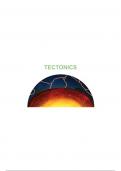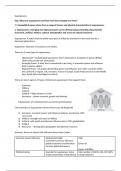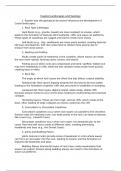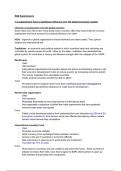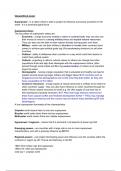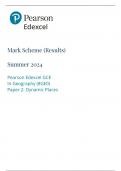Pearson Edexcel • Geography 2016
Latest uploads for Geography 2016 at Pearson Edexcel. Looking for Geography 2016 notes at Pearson Edexcel? We have lots of notes, study guides and revision notes available for Geography 2016 at Pearson Edexcel.
-
439
-
67
-
55
Modules Geography 2016 at Pearson Edexcel
Notes available for the following courses of Geography 2016 at Pearson Edexcel
Popular books Pearson Edexcel • Geography 2016

David Holmes, Cameron Dunn • ISBN 9781471856532

Cameron Dunn, Kim Adams • ISBN 9781398312296

Cameron Dunn, Kim Adams • ISBN 9781398312555

Cameron Dunn, Kim Adams • ISBN 9781398312319

Bob Digby, Catherine Hurst • ISBN 9780199134830
Latest content Pearson Edexcel • Geography 2016
A Level Edexcel Revision Notes - Physical Geography Topics Include: - coastal processes - tectonic hazards - the water cycle - the carbon cycle (disclaimer: recent examples used in notes may be subject to change due to current world events) Summary notes are made from: Pearson Edexcel 4th Edition Textbook, Pearson Revision Guide, and Class Notes
A Level Edexcel Revision Notes - Human Geography Topics include: - Globalisation - Regenerating Places - Superpowers - Health, Human Rights and Intervention (disclaimer: recent examples used in notes may be subject to change due to current world events) Summary notes are made from: Pearson Edexcel 4th Edition Textbook, Pearson Revision Guide, and Class Notes
in-depth a-level edexcel geography case studies for coasts
In-depth a-level geography case studies for globalisation
In-depth case studies for A-level geography Edxcel
A summary of the whole topic of Superpowers from class notes and using the Pearson Edexcel Year 2 Geography Textbook (2016).
This document summarises how This document discusses how geological structures like rock type, faulting, folding, and rock dip shape coastal landscapes by influencing erosion rates and forming features such as headlands, cliffs, and bays. It also outlines the physical factors affecting coastal recession including wave energy, tides, weathering, and climate conditions, which determine how quickly coastlines erode. Additionally, it explains the process of plant succession on sand dunes, from pione...
In depth revision notes for superpowers enquiry question two that follow the edexcel specification, including in case study examples from official textbooks and wider world examples.
In depth revision notes for superpowers enquiry question one that follow the edexcel specification, including in case study examples from official textbooks and wider world examples.
AS LEVEL EDEXEL GEOGRAPHY QUESTION PAPER 2 MARK SCHEME 2024





